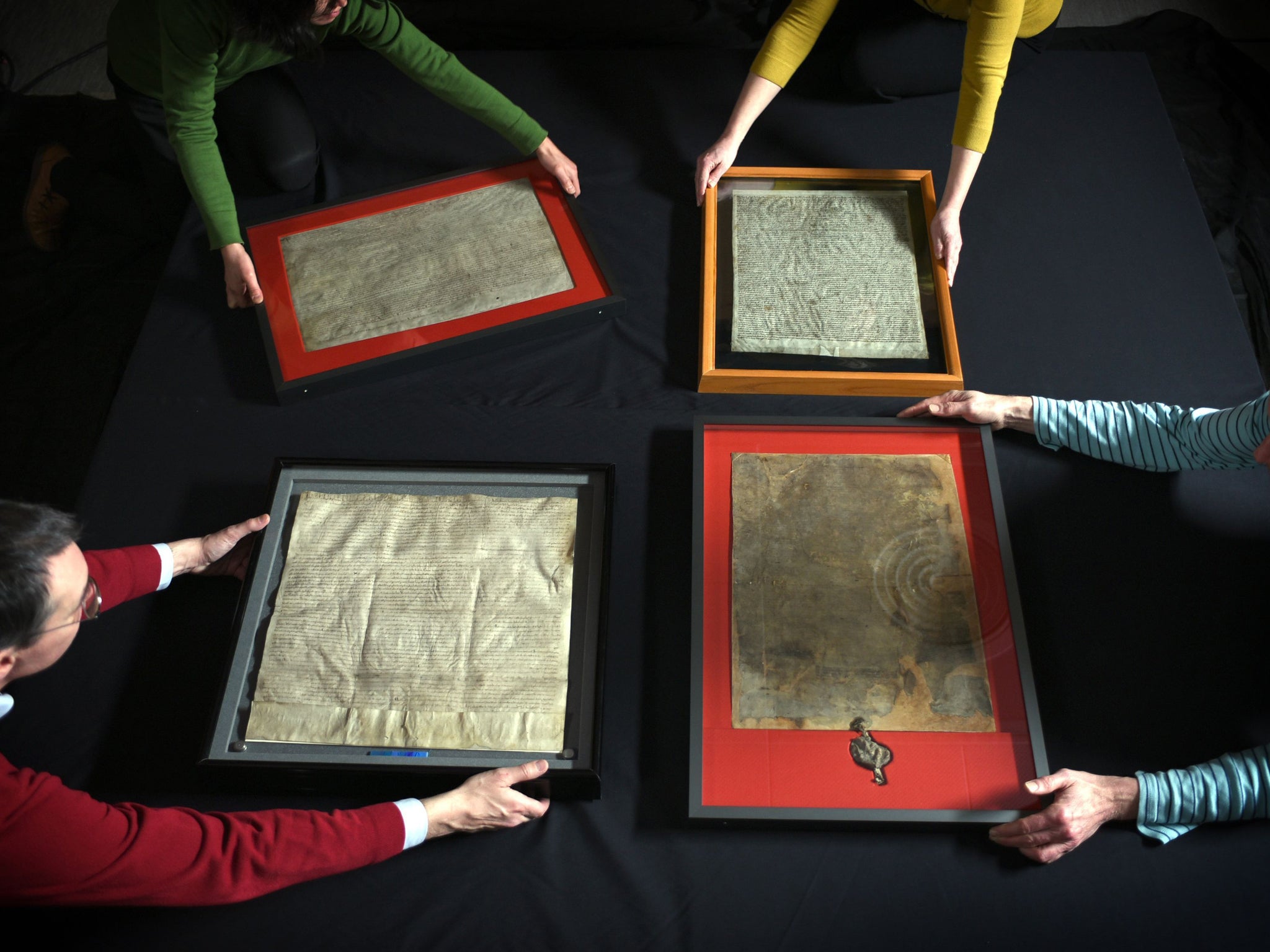Magna Carta: What is it, why is it still important today – and where can you see it?
The manuscripts will be on display at the House of Lords for just one day

The four surviving original manuscripts of the Magna Carta go on display together today in the House of Lords.
The event marks the 800th anniversary of the charter which first laid the foundations of the rule of law.
The manuscripts - two held by the British Library and one each by Lincoln and Salisbury cathedrals - will be on show for just one day in the Palace of Westminster as part of a programme of events commemorating the sealing of the Magna Carta at Runnymede on June 15, 1215.
What is it?
Magna Carta, which means ‘The Great Charter’, is one of the most important documents in history as it established the principle that everyone is subject to the law, even the king, and guarantees the rights of individuals, the right to justice and the right to a fair trial.
When was it signed?
The Magna Carta was first authorised in June 1215 at Runnymede, on the River Thames, near Windsor. Paintings depicting the signing of the document often show King John with a quill in his hand, thought he most likely authorised the document using the Great Seal rather than a signature.
In fact, the Royal Mint has been criticised for the design on its commemorative 800th anniversary £2 coin, which shows King John brandishing the document and a quill.
Why was it created?
In 1215 King John agreed to the terms of the Magna Carta following the uprising of a group of rebel barons in England.
The barons captured London in May 1215, which forced King John’s hand and caused him to finally negotiate with the group, and the Magna Carta was created as a peace treaty between the king and the rebels.
What does it say?
The whole document is written in Latin, and the original Magna Carta had 63 clauses. Today, only three of these remain on the statute books; one defends the liberties and rights of the English Church, another confirms the liberties and customs of London and other towns, and the third gives all English subjects the right to justice and a fair trial. The third says:
“No free man shall be seized or imprisoned, or stripped of his rights or possessions, or outlawed or exiled, or deprived of his standing in any other way, nor will we proceed with force against him, or send others to do so, except by the lawful judgement of his equals or by the law of the land.
“To no one will we sell, to no one deny or delay right or justice.”
Did it achieve its short-term goal of creating peace?
No. Although King John agreed to the Magna Carta at first, he disliked it when its terms were forced upon him.
He wrote to the Pope to get it annulled, who agreed with John despite the strain between the King and the Church at the time. The Pope called the Magna Carta “illegal, unjust, harmful to royal rights and shameful to the English people”. He then declared the charter “null and void of all validity for ever”.
Full-scale civil war then broke out between John and his barons. It only ended after John's death from illness in 1216.
A second version of the Magna Carta was issued by Henry III in 1225, which was granted explicitly in return for a tax payment from the whole kingdom.
Why is it significant today?
The Magna Carta is considered one of the first steps taken in England towards establishing parliamentary democracy.
In the century after Henry III’s version of the Magna Carta, parliament interpreted the document’s message as a right to a fair trial for all subjects.
During the Stuart period, and particularly in the English Civil War, the Magna Carta was used to restrain the power of monarchs at a time when monarchs on the continent were supremely powerful.
What wider role has it played?
There are strong influences from the Magna Carta in the American Bill of Rights, written in 1791. To this day there is a 1297 copy in the National Archives in Washington DC.
Even more recently, the basic principles of the Magna Carta are seen very clearly in the Universal Declaration of Human Rights, penned in 1948 just after the Second World War.
Additional reporting by PA
Join our commenting forum
Join thought-provoking conversations, follow other Independent readers and see their replies
Comments